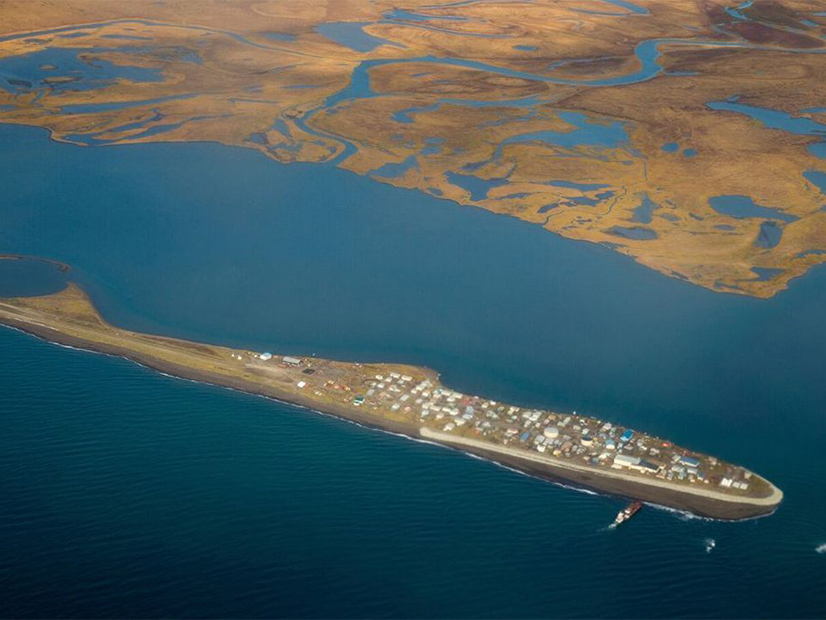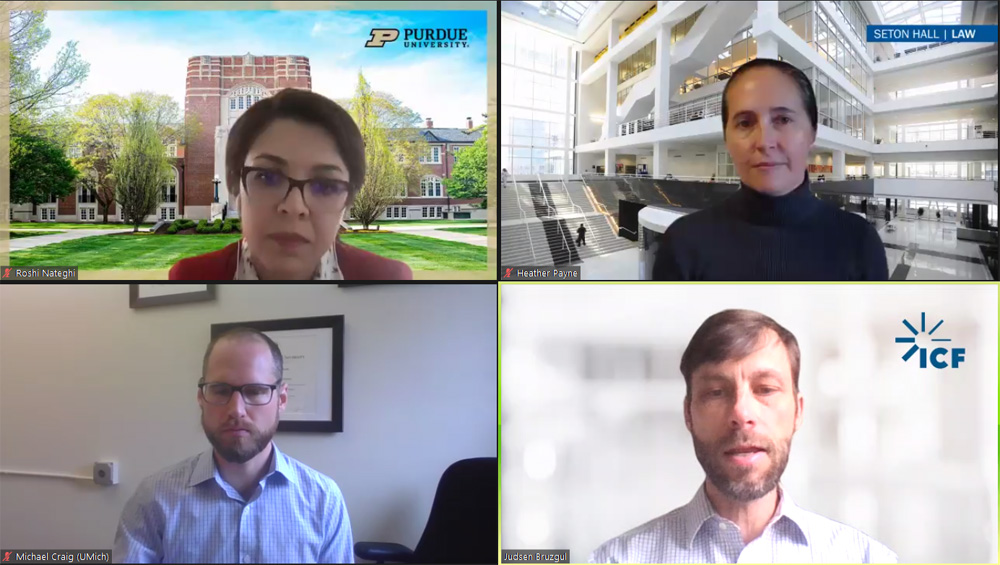
Government officials and utility planners lack the tools and policies needed to address climate change, despite growing awareness that it is an increasing threat to infrastructure and public health, researchers said Wednesday.
“There’s clear evidence that [severe events’] likelihood and intensity are increasing under climate change. And yet there’s very little understanding of how to model their amplified impacts on infrastructure, energy systems and communities,” Roshanak Nateghi, a Purdue University professor of industrial engineering, told an Energy Bar Association webinar.
Nateghi, whose research focuses on the resilience of energy systems, said federal relief policies that are responsive to “rapid onset events” like hurricanes fail to recognize long-term threats such as droughts, heat waves and sea level rise.
“Droughts and heat waves are amongst the most costly and lethal [events] in the U.S. Just one example is the Chicago heat wave back in 1995, where 50,000 customers lost power; over 700 people died,” she said. “And yet when you go back to the disaster relief database, you’ll see very disproportionately less … investment.”
 Clockwise from top left: Roshanak Nateghi, Purdue University; Heather Payne, Seton Hall University of Law; Judsen Bruzgul, ICF, and Michael Craig, University of Michigan | Energy Bar Association
Clockwise from top left: Roshanak Nateghi, Purdue University; Heather Payne, Seton Hall University of Law; Judsen Bruzgul, ICF, and Michael Craig, University of Michigan | Energy Bar Association
Heather Payne, professor of energy and environment at the Seton Hall University School of Law, said the “poster child” for the disconnect is Kivalina, an Alaskan native village that has sought federal funding to relocate because of sea level rise “and yet has been denied that multiple times by [the Federal Emergency Management Agency] because they don’t view the impacts from climate change as within their discretion.”
Payne also cited the Nuclear Regulatory Commission’s 2019 decision to relicense the Turkey Point nuclear plant south of Miami through 2052 despite concerns over sea level rise.
Nateghi said FEMA’s policies encourage perverse incentives. “For FEMA to release some of those [disaster] funds … the damage needs to be a certain [number of] dollars per head. … So in a way, you’re encouraged to sustain a lot of losses … to be able to qualify.”
Lack of Data
The recognition that severe events can be longer in duration and cover a wider region demands “a different, or at least complimentary, approach to reliability, planning and investment,” said Judsen Bruzgul, senior director of climate resilience for consulting firm ICF International.
University of Michigan professor Michael Craig, who models regional power systems to test their resilience, said the industry hasn’t done enough research on how different parts of the power system will interact under extreme events.
In the past, utilities used decades of past meteorological data for planning. “That prior 40 years is not representative of what we will see in the future. … So where do I get my meteorological data now?” he asked. “The unsatisfactory answer is you get it from climate models. But the climate models were not built to give that data to utilities. They don’t capture these extreme events well. They’re not at the resolution that they want them at.”
Nateghi said utilities generally have access to some type of weather forecasting capability. “What I often find missing is a model that translates the climate impact to infrastructure impact. A lot of times I think that translation happens based on expert knowledge, which would have been fine if our climate system was stationary. But … that translation — based on gut feeling as opposed to in a data-driven way, which is guided by the physics of the infrastructure — is not always helpful.”
‘Duty to Serve’ Must Change
Payne, whose work focuses on the legal and policy changes needed for economy-wide electrification, said climate change requires a change to the common-law concept of utilities’ “duty to serve” all customers within their monopoly territory.
“As climate change alters the conditions of the natural world, utilities will find themselves in the situation where continuing to provide service, reinstalling infrastructure to provide service where it has been lost, or providing new service would be considered imprudent,” she argues in an upcoming paper.
“I take a fairly expansive view of what utilities and regulators can and should be doing,” she said Wednesday, reiterating arguments from a prior paper on what she calls the “natural gas paradox.”
“The first thing is that they need to not be making the problem worse, right? So you should not be putting any fossil fuel infrastructure into your system at this point. I mean, if you want to be part of the solution, I actually do view that it’s that simple.”
She said regulators should also repurpose existing spending on programs like energy efficiency in order to reduce ratepayers’ energy burden. “I can go to my local Home Depot, and energy efficiency money will make it so that I can purchase reduced-price LED light bulbs. I don’t think that’s necessarily the best use of our energy efficiency funds.”
Payne said she is dismayed by how little public participation there is in utility integrated resource plan proceedings. “I have looked at lots of IRP dockets where you have all of two filings: You have the initial plan that the utility put in, and you had order from the PUC accepting or adopting it. And that’s it,” she said. “Something that I think regulators need to work on is really finding more ways to have communication.”
Aligning Mitigation and Adaptation
Craig said researchers and planners don’t know yet whether it is possible to align adaptation policies with climate mitigation policies.
“These are things that we need to think of together rather than separately. These are long-lived assets: 20, 30, 40 years. So they’re going to be around as climate change intensifies.”
A carbon price that incentivized investment in low-carbon generation “does not necessarily make you more adapted to climate change,” he said. “You could be putting nuclear power plants or carbon capture and sequestration on the sea or on rivers that in 10 or 20 years … that are going to be affected by sea level rise.”
Craig said the traditional “beneficiary pays” principle of utility regulation can be unfair to those most impacted by climate change.
“You have situations where now people who are most impacted by climate change — wildfires are a perfect example — are exposed to tremendous costs, and upgrading the grid and those same communities might be the least able to fund it.
“If I have a rural community in Oregon that is now facing public safety power shutoffs, I can underground that line [at a cost of] millions of dollars. Can that community pay for it?” he said. “That is a challenge to me in terms of how we think about regulating and distributing these costs.”
ICF’s Bruzgul sees promise in the use of “adaptation pathways,” which seeks to escalate responses as the severity of climate impacts intensify rather than initially seeking the most expensive solutions.



